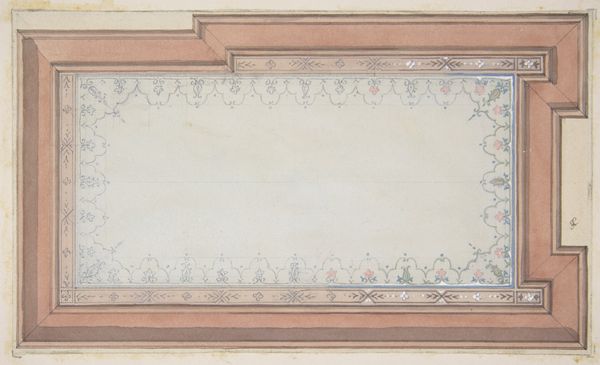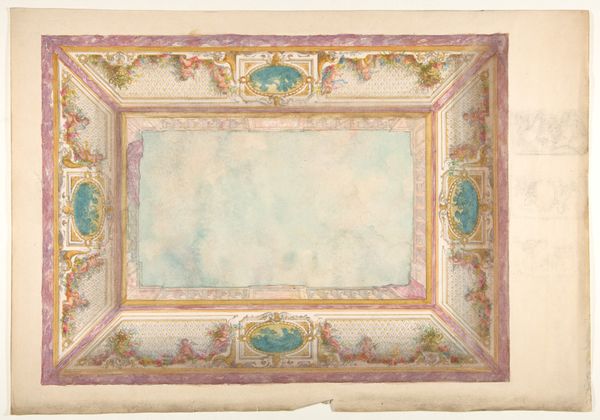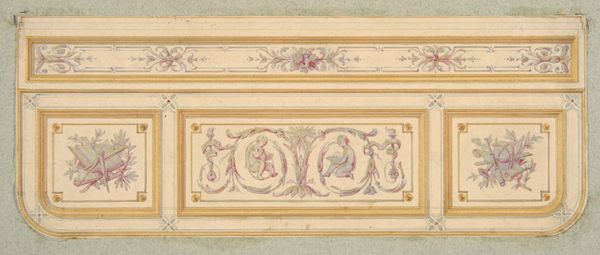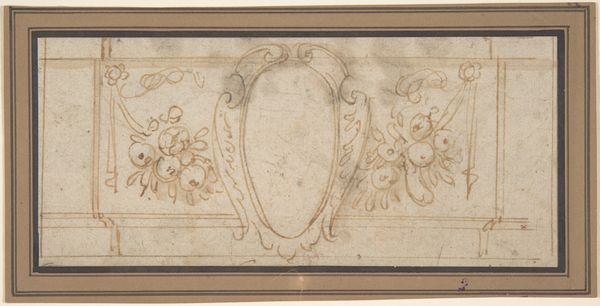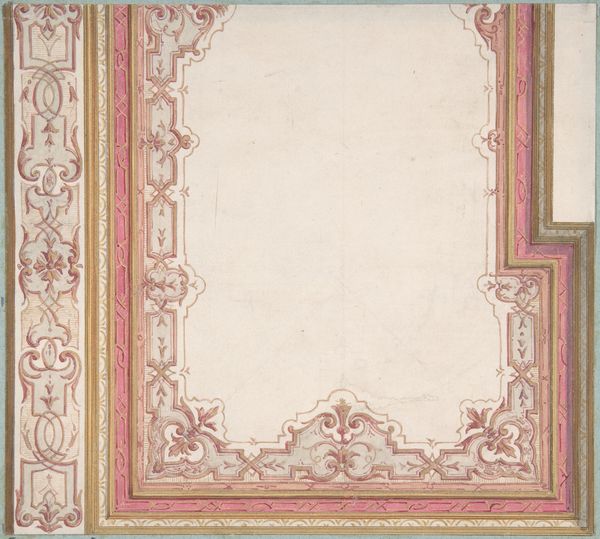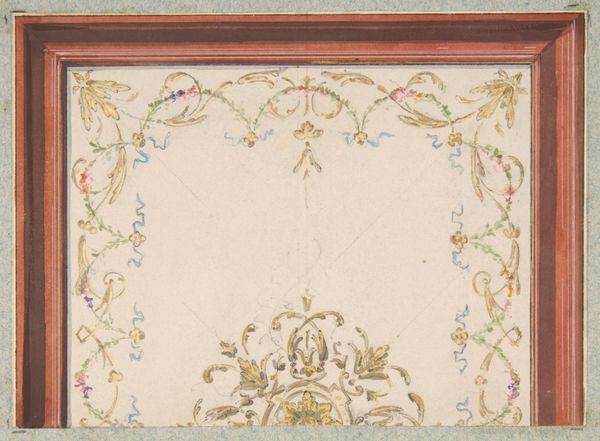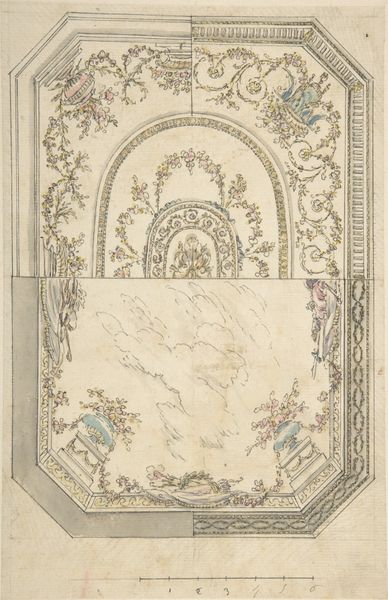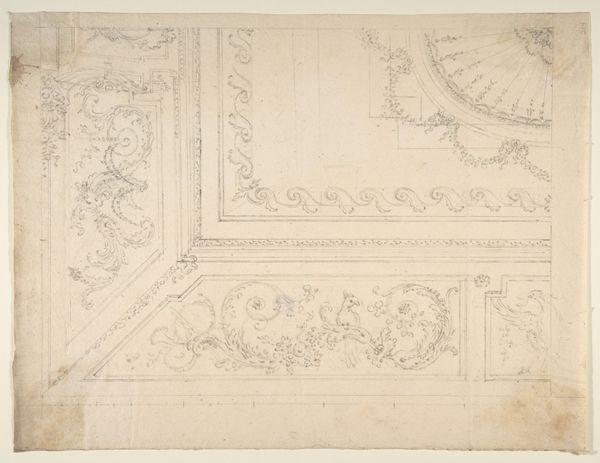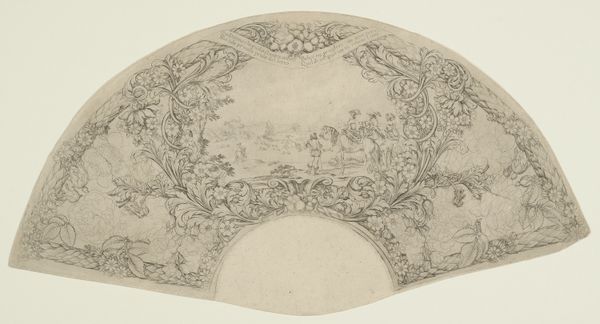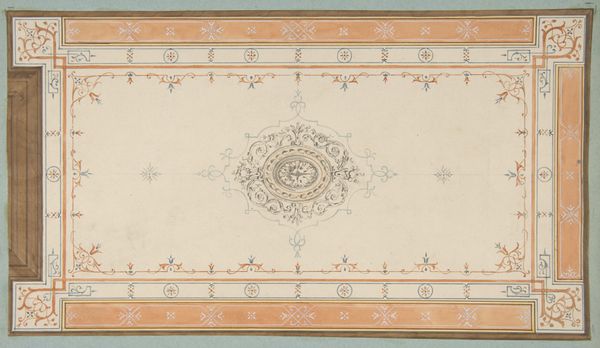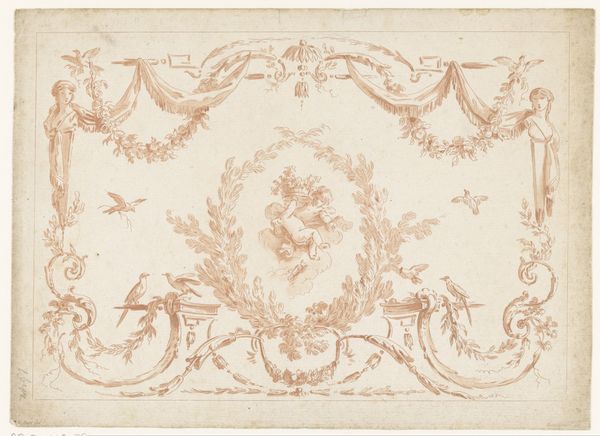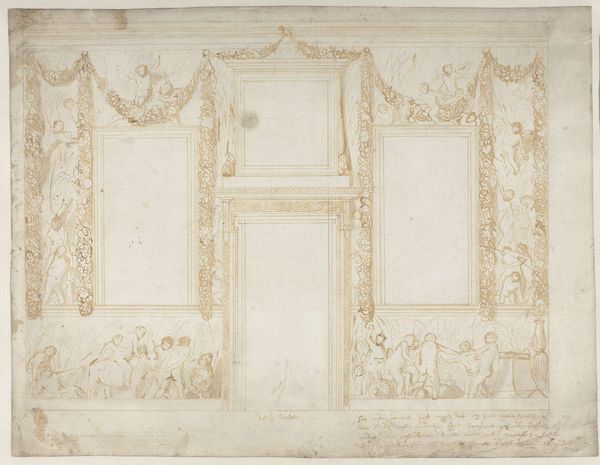
Design for a ceiling with ribbon bearing putti 1850 - 1900
0:00
0:00
drawing, print, watercolor
#
drawing
#
allegory
#
muted colour palette
# print
#
traditional architecture
#
watercolor
#
history-painting
#
watercolor
Dimensions: Overall: 17 3/16 x 19 9/16 in. (43.6 x 49.7 cm)
Copyright: Public Domain
Curator: Here we have a drawing attributed to Jules-Edmond-Charles Lachaise, a "Design for a ceiling with ribbon bearing putti," made sometime between 1850 and 1900. It’s currently held at the Metropolitan Museum of Art. Editor: My first impression is one of lightness, almost ethereal. The color palette is subdued, fostering a sense of quiet elegance. I can see the ghost of forms hovering at the design's center, waiting for definition. Curator: The drawing exhibits a formal, almost academic, approach to ceiling design. The symmetry is meticulously observed, and the composition emphasizes balance and order. The framework comprises geometric precision with floral accents; classic Beaux-Arts. Editor: But isn’t the absence of a clear, finished central image speaking volumes? I can’t help but wonder about the context: who was this ceiling design intended for, and what kind of power or status were they hoping to project with this display of wealth and, frankly, outdated imagery of putti? What ideologies do they uphold, especially within the landscape of its creation in the latter half of the 19th century, amidst rising industrialism? Curator: I see your point, but the delicacy and technical skill should also be acknowledged. The precision evident in the ornamentation around the perimeter is remarkable, and even the suggestion of the putti showcases Lachaise’s skill in draftsmanship. I'm particularly interested in the function of these swirling linear accents against these angular planes to draw your eye inward toward the drawing's sketched figures. Editor: Sure, the technique is there, but how can we look past the elitism inherent in such ornamentation? Think about the social climate; these gilded cages were not available to many people—in contrast, how many impoverished populations can we estimate existed at this point? And what were the political dynamics related to that divide? This is an era of imperialism—what specific powers does this ceiling reflect? Curator: Those social commentaries are vital, certainly, but by focusing so heavily on exterior contexts, we run the risk of overlooking the more understated achievements that are embedded into the surface texture itself—like in these blended washes or balanced planes. This should be observed foremost as art; social meaning should always come after artistic intention and technical nuance. Editor: I contend that isolating the artwork from its social implications obscures a more holistic understanding. Seeing art this way, from an unbiased aesthetic perspective, upholds an exclusive academic authority instead of opening the viewing process as something participatory and accessible. We have to embrace a perspective that reveals context. Curator: I appreciate that outlook, seeing that this design can be read as emblematic of 19th-century attitudes toward class and power structures... Editor: Exactly! Understanding that helps contextualize the art historically and offers invaluable opportunities for interpretation beyond aesthetics alone.
Comments
No comments
Be the first to comment and join the conversation on the ultimate creative platform.
